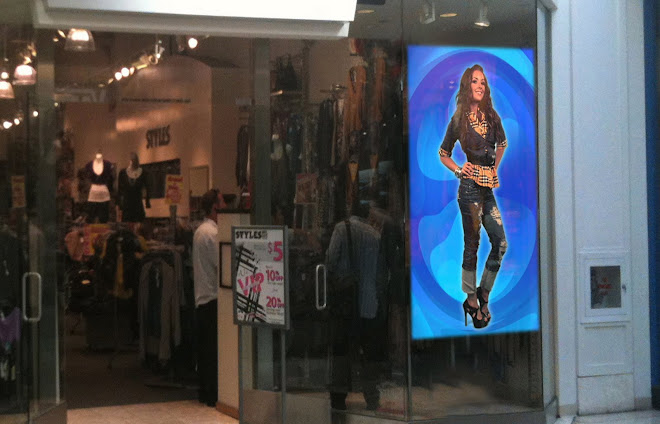Nobody calls you up and says, "Hey, that screen in the airport? You know the graphic with the -------, that one? It really blows. I was so uninterested, I didn't even pay attention!"
You get no feedback on ineffective messaging.
This allows for a great deal of ineffective content to flow right on our there into the space, giving your display, the location where it's deployed, anyone who works there that's close by, and of course you and your company, and the Digital Signage industry generally, A BAD NAME!
Poor visual content and method are responsible for a lot of the fails in this industry. DON'T CONTRIBUTE TO IT!
This display is a good example of bad. You'll notice that not one person even looks. The image doesn't grab you. It's very faint. When you finally do notice (which in this case, could be never,) the images don't convey anything specific or relevant. That is a bad thing for DS or DOOH. Don't blame the hardware, or the software, or the location. Blame the execution and complete lack of relevant content.
Develop campaigns that are trackable, and then work on the message. Tweak it. Don't settle for the status quo. Don't assume that it's good enough, or that the results you get are the limit of effectiveness for that campaign. With visual messaging, it's not always the proposition (or lack of one.) Sometimes it's the method or style of the visuals surrounding the message.
A great deal more attention needs to be paid to testing the effectiveness, and then understanding why certain visual messages are effective. In my view, this is an area where DOOH needs to focus a lot more attention. It's not just about the hardware, placement, software, or management. It's how that message content is put together and knowing, to the greatest degree possible why a message works or doesn't work. For that you need measurement and analysis.
You want to make money in DS? Understanding your content and why it produces the result it does is key to ensuring profitability.


